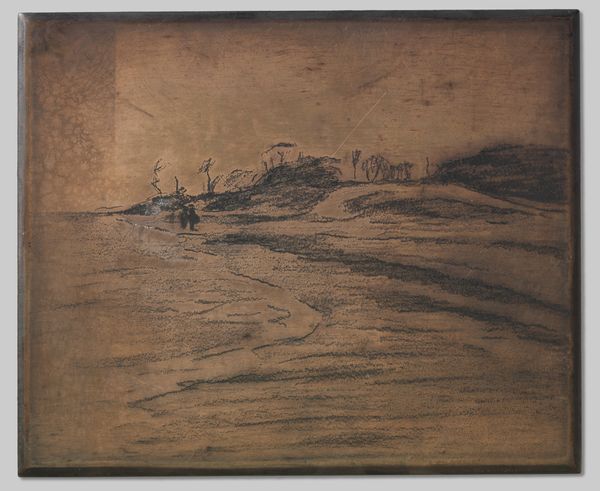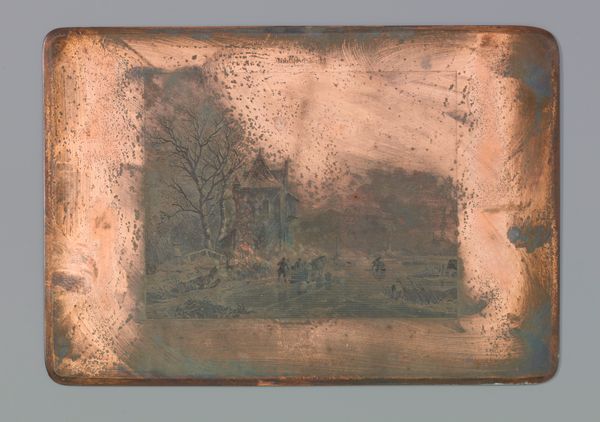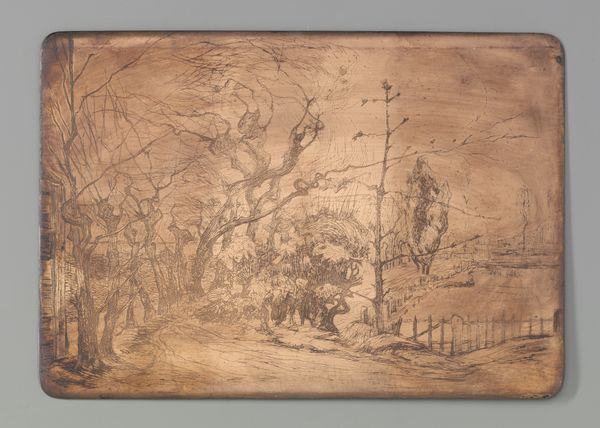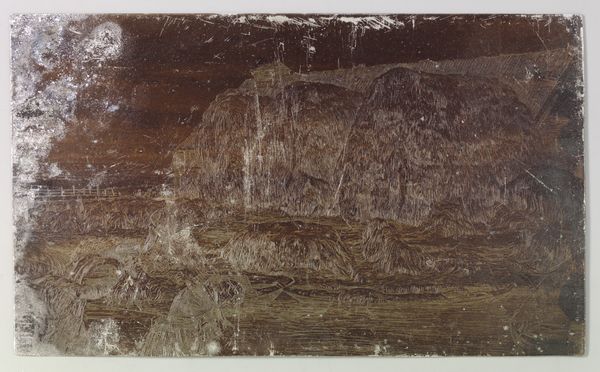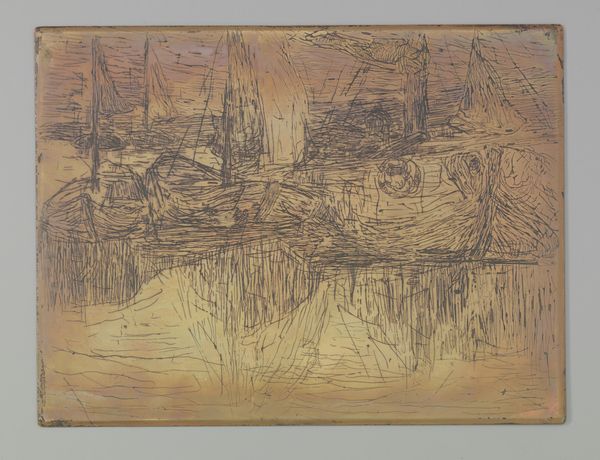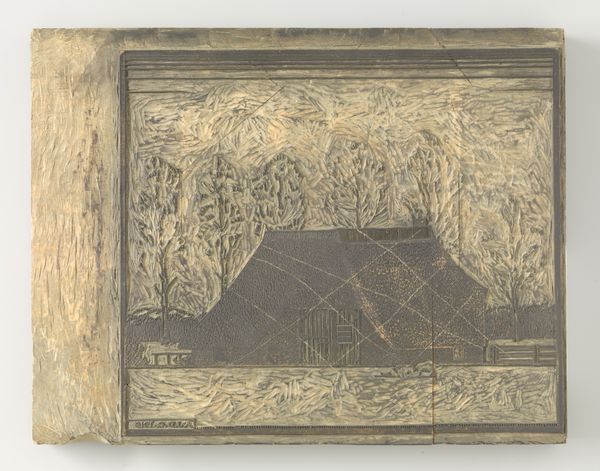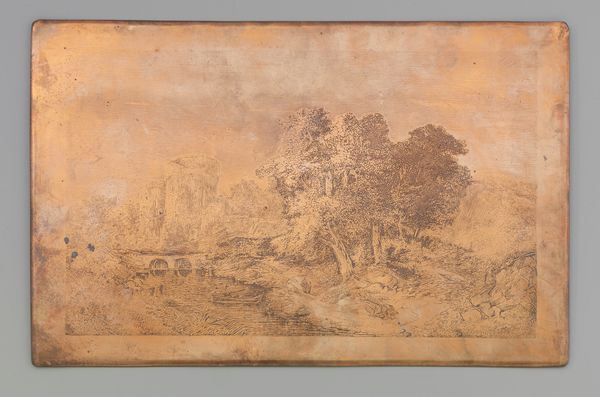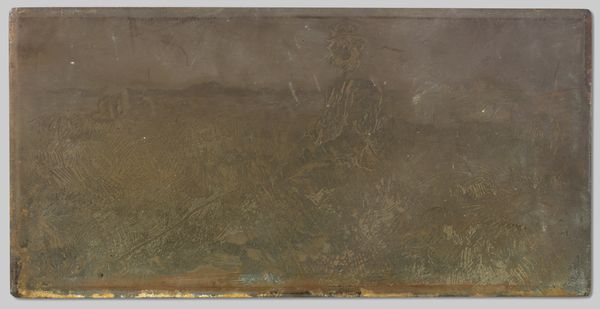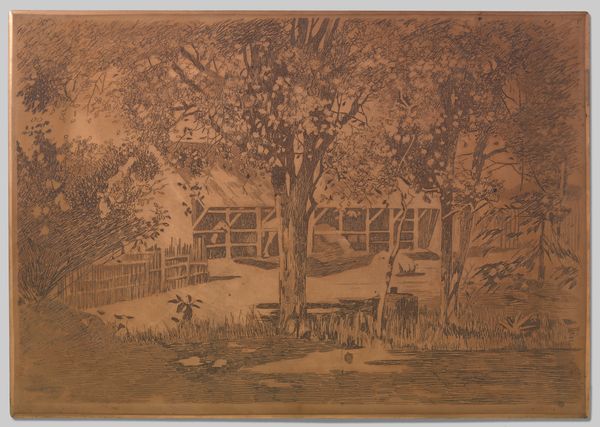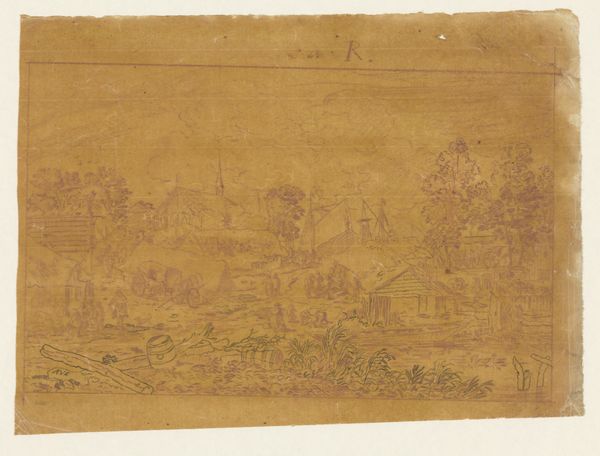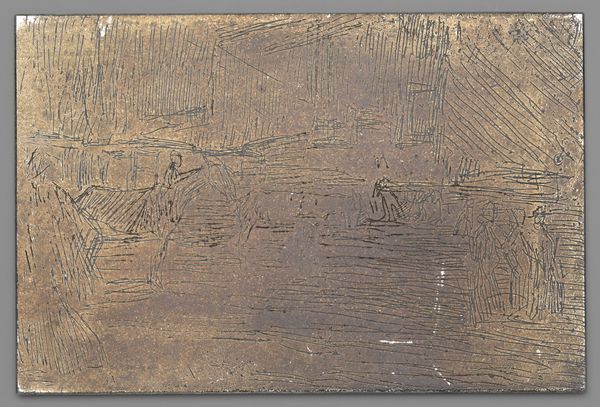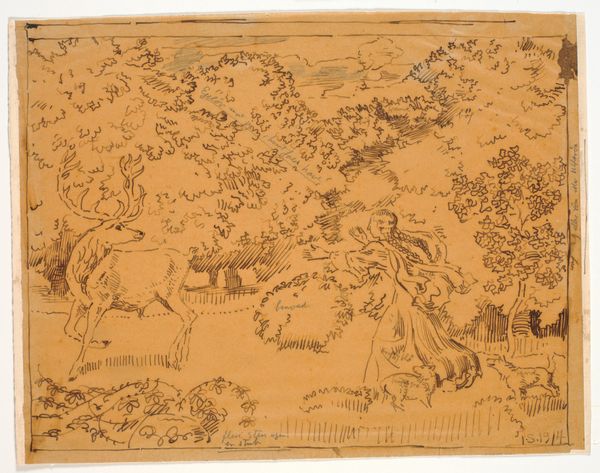
Dimensions: height 100 mm, width 199 mm
Copyright: Rijks Museum: Open Domain
Curator: Here we have George Hendrik Breitner's "Veldartillerie," created around 1893, currently residing at the Rijksmuseum. It’s a work rendered in ink, combining elements of drawing and watercolor in a plein-air style. Editor: My first impression is melancholy; a somber march beneath a wide, indifferent sky. The sparse use of color adds to that feeling of transience. Curator: The drawing itself is very process-oriented. You see Breitner engaging with industrialization by documenting the movement of the artillery, linking military technology with the artistic labor involved in capturing it. Consider the physical act of repeatedly sketching the soldiers, horses and carriages in rapid succession; the material labor is central to this kind of impression. Editor: Right, it feels less like glorification and more like reportage. There's no romanticism here, just a record of these...cogs in a machine. Though, despite the lack of traditional artistic flourishes, something deeply human pierces through the gloom. Maybe it's the way he captured movement? Curator: Absolutely. It also shows how social shifts are influencing artistic practices. This kind of scene couldn't have been realistically rendered on a large scale canvas. Instead, Breitner focuses on efficiency to document fleeting moments of modernity and his position inside the crowd witnessing such shifts. Editor: True. The fact that it's on paper, in ink, heightens that immediacy; it’s raw and almost...confessional. There’s an undeniable grit and grain that mirrors the landscape depicted. It’s almost like he's channeling the very earth. Curator: And Breitner was definitely interested in capturing real life experiences. We often forget that representations of labor were a significant part of late 19th century art making, albeit with different purposes for different artists. The choice of media—ink and drawing—is practical for the location, as a sketchbook enables a more immediate process in documenting events like military exercises. Editor: Yes. So instead of seeing grand battle scenes, he showed us something in between. What sticks is the ordinary, unheroic plodding—a stark view, yet filled with a ghostly beauty I can't quite put into words. Curator: It brings out tensions within modernity and artistic innovation at the end of the 19th Century. It provides a study of not just representation, but material reality and change as well. Editor: In the end, it's left me with this weird appreciation for both art and its impact on how we understand ourselves.
Comments
No comments
Be the first to comment and join the conversation on the ultimate creative platform.
